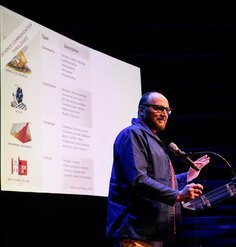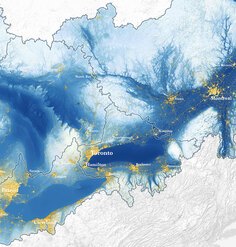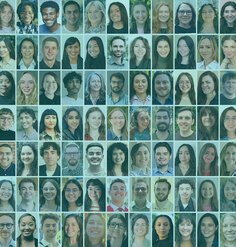LAF Fellowship Spotlight: Beyond Flood Control
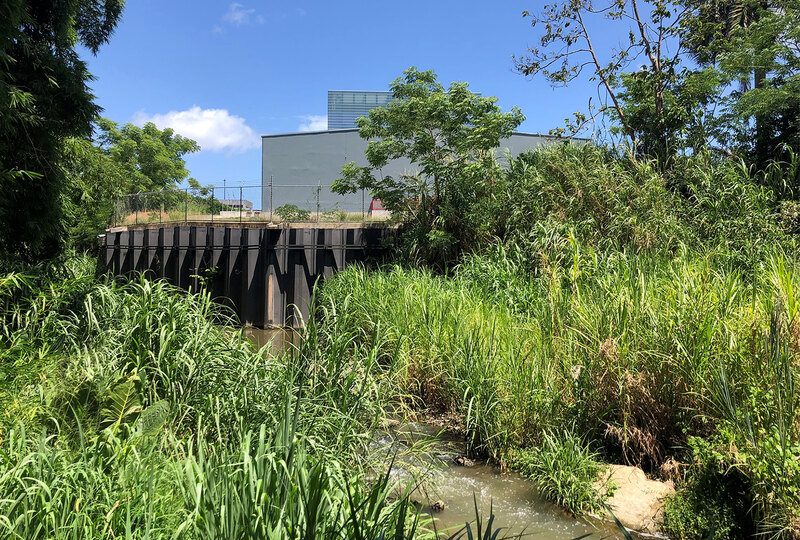
Members of the 2020-2021 cohort of the LAF Fellowship for Innovation and Leadership have been exploring big ideas and refining their proposed projects for exploration over the coming year. The Fellows will present the culmination of their work at LAF’s Innovation + Leadership Symposium in the spring of 2021. In the meantime, LAF is profiling each Fellow to share more about their progress and personal journeys.
Edmundo Colón Izquierdo, San Juan native and Principal at ECo, has a bold message for developers working on Puerto Rico’s Río Piedras Watershed: El río está vivo… y nadie lo sabe! (the river is alive… and nobody knows!) Flowing about 10 miles (16km), the Río Piedras is the only river in San Juan, and its watershed is fully contained within the metropolitan area. Current flood control plans laid out by the US Army Corps of Engineers (USACE) and the Federal Emergency Management Agency (FEMA) would reduce a 9-mile section of the river and its vibrant ecological system to a monofunctional concrete channel. Over the past year and a half, Edmundo has brought together various stakeholders working on or impacted by the Río Piedras to advocate for alternative, multi-use solutions for the river and the land surrounding it. Now, as he refines and strengthens this effort through the LAF Fellowship for Innovation and Leadership, Edmundo is focusing on how to reconcile engineering and nature at the Río Piedras while synthesizing the lessons learned into a framework for future resiliency projects like this.
Few would argue against the value of a more holistic design response to regular flooding along the Río Piedras but integrating those principles into the existing plan is an immense challenge. The de facto authority of federal agencies like USACE and FEMA is compounded by the sheer length of time (nearly five decades) that has been invested in the proposed plans. But, to Edmundo, Hurricane Maria (2017) was the stress test that brought Puerto Rico’s latent infrastructure shortcomings to the surface and demonstrated the necessity of doing things differently. As one of fewer than 30 licensed landscape architects living on the island, he has worked to incorporate what he considers a crucial and missing perspective into the process.
“We as landscape architects have been preparing since the ‘60s to guide development. In the 19th century, there was important development that happened because engineering advanced… The 20th century was marked by architects, who really gave a language to cities. The language of the 21st-century contemporary city is a language of landscape.”
Edmundo has used a grassroots approach to build a critical mass behind that perspective. So far, his work has centered on coalition-building and education, both personal and outward. By attending conferences and other events where relevant stakeholders were gathering, he found allies and joined the Alianza para el Río Piedras (Alliance for the Río Piedras), a long standing group of scientists and scholars who’d been interested in the Rio Piedras and the flood control project for a decade. With newly found resources and resolve the group sought an audience with those driving the flood control project, eventually meeting with the Puerto Rico Department of Natural and Environmental Resources (the agency that submitted the request for flood management at the site), San Juan city officials, USACE, FEMA, and other technocrats.
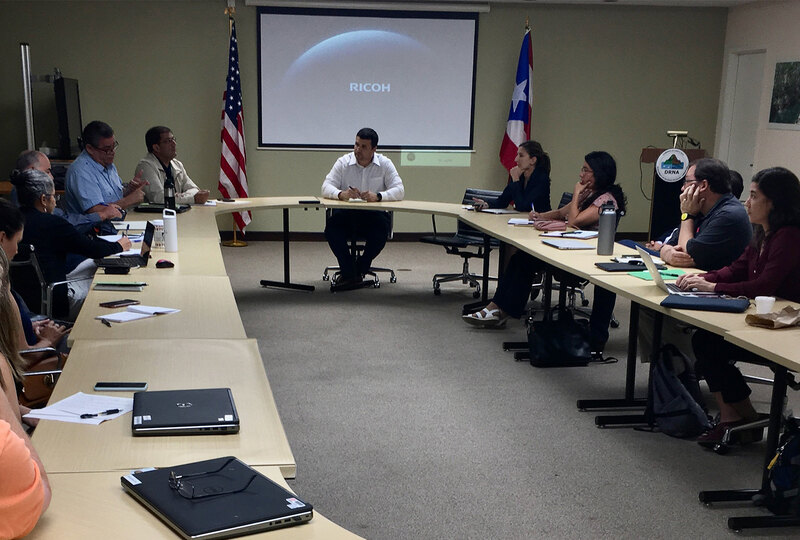
Edmundo noticed that these groups work in silos that limit each group’s understanding of what is necessary, feasible, and possible at the site and breed misunderstandings. Edmundo recalls an engineer who approached him after a successful meeting to express his surprise at their shared goals. The engineer had entered the discussion with the assumption that the Alliance sought to halt the river project completely.
Overcoming a lack of communication and the singular focus of each respective actor takes patience and interpersonal savvy. Edmundo thoughtfully tailors his message to each group, speaking to them in their technical language and in terms of what is most important to engineers, to hydrologists, to botanists, and so forth. Edmundo elaborated, “Our goal is noble—and I say ‘our’ because I know it’s not just about me anymore—and we’ve developed talking points that frame those goals in a positive way. So, the message is well-received.”
Edmundo credits the fellowship with simultaneously pushing his organizational thinking forward and carving space for reflection. He characterizes his initial efforts as a scramble to gain momentum. Now, he is more deliberate and proactive with each step. He’s also grateful to share this journey with his fellow cohort members. “I get all the support I need from my family, but there are these other five individuals struggling with the same issues I’m experiencing. There’s something about being alone and trying to move this immovable object and feeling this sense of responsibility… it’s overwhelming. But it’s comforting to know you can rely on people who are going through the same thing.”
In an early sign of hope, the Department of Natural Resources added its signature to a letter written by the Alliance to USACE requesting a design charrette to illustrate possible changes to the project along the Río Piedras that can still be incorporated into the existing timeline. As Edmundo waits for confirmation, he’s taking inventory. Who’s keyed in? Who’s missing from the conversation? And what lessons can he translate into a model for future community-driven advocacy? It’s a huge undertaking, but Edmundo meets the challenge by allowing the process to unfold organically and remaining focused on his goal to preserve this living, breathing urban waterway.
UPDATE: You can watch Edmundo's presentation from the 2021 LAF Innovation + Leadership Symposium here.
